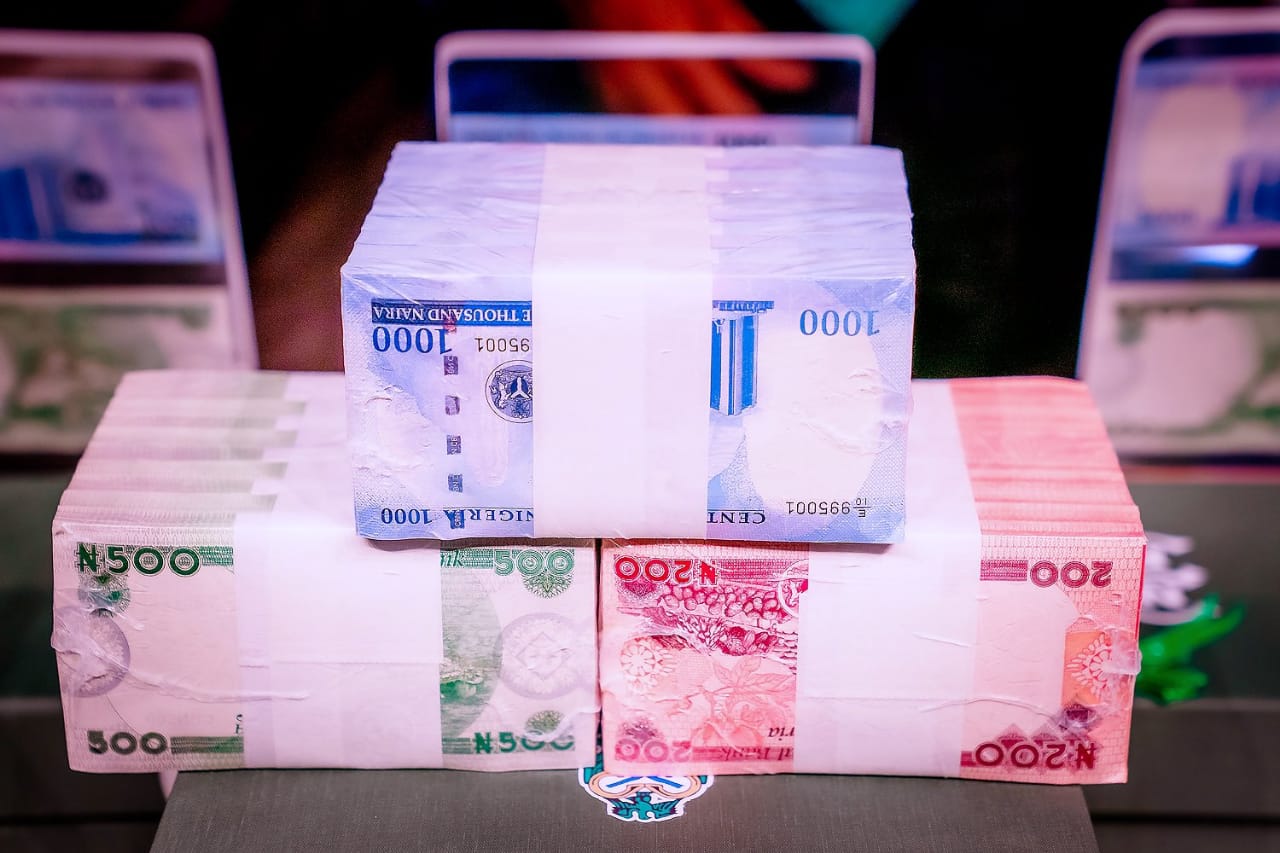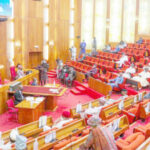On October 26, 2022, the Central Bank of Nigeria (CBN) announced plans to redesign and distribute new N200, N500 and N1000 bank notes to replace the existing ones.
Speaking on the development, Godwin Emefiele, CBN governor, stated that the move to introduce newly designed notes became imperative following the abnormalities bedevilling Nigerian financial, monetary and security systems. The circulation of the new designs was to begin on December 15, 2022, while the old notes would be used for transactions until January 31, which was eventually extended till February 10, after which only new notes would be legally recognised and used for transactions.
The CBN expects that this dash to redesign Nigeria’s currency would reduce counterfeiting, encourage a cashless economy and stave-off cash hoarding.
Furthermore, it aims to bring more people into the financial sector, and even more ambitiously, reduce incidents of kidnapping and terrorism because there will be no notes in circulation for ransom payments.
But while there was consensus among experts that redesigning currency for various reasons might not be a bad idea, what is currently happening in Nigeria has left many questions unanswered by the brains behind the initiative as millions of citizens have found themselves confused and cash-strapped without serious explanation from any corner.
Media Trust Debate: Kano voters optimistic with APC, LP, PDP guber candidates’ manifestoes
Emefiele, make redesigned Naira notes available
Some Nigerians have continued to ask questions on whether the approach adopted by Nigeria for the transition is the same in other climes.
Global best practices
Countries around the world redesign and reissue their legal tender for several reasons. Chief among the motives is the prevention of counterfeit currencies.
Redesigning currencies improve a currency’s security by enabling countries to keep counterfeiting low and stay ahead of threats.
India’s 2016 demonetisation
In 2016, the Indian government under Prime Minister Narendra Modi had a plan to stop corruption and reduce the amount of money in circulation by withdrawing and reintroducing the 500 and 1,000 denominations of the Indian rupee within six months.
A prime motivation behind Modi’s move, according to experts, was to make tax enforcement easier by shrinking the cash economy that was largely beyond the reach of tax inspectors.
Greater use of banks and electronic payment systems generates paper trails (or perhaps ‘bit trails’) for tax inspectors to follow. Readily available means of verifying income statements are widely credited with enabling high levels of taxation in western economies.
More than 250 million new accounts were opened since the end of the programme in 2014.
In 2018, a Bloomberg report stated that the scheme froze “agriculture and small businesses with a liquidity shock, put people through unnecessary hardship, disrupted supply chains and destroyed demand for everything, from autos to property.”
Net savings in India were reduced by 50 per cent a year after the policy was implemented. The currency in circulation also increased to 20trillion rupees from 18trillion before the policy.
A 2018 report by the International Monetary Fund titled, “Article IV Consultation Report on India,” also provided that the disruption caused by cash shortages dampened consumer and business sentiments. The abruptness of the policy and the consequent shortage of cash led to the policy’s poor performance.
Going by the outcome in India, a six-month timeline proved to be wholly short-sighted and ineffective and achieved none of its grand objectives.
The UK approach
The Bank of England is responsible for producing and issuing banknotes in England and Wales. The most recent series of Bank of England banknotes, technically known as Series G, was launched over a five-year period, between 2016 and 2021. This series is the first that was printed on polymer.
The next generation banknote research started in 2011. Early industry engagement started in 2012; and early public engagement in 2013. The first set of design work and pre-production was from 2014 to 2016.
A new 5pound was issued in September 2016. The legal tender status of paper five was withdrawn in May 2017, while new10pound was issued in September 2017. The legal tender status of paper 10pound was withdrawn March 2018, new 20pound issued February 2020 and new 50-pound issued June 2021. Legal tender status of paper 20pound and 50pound were withdrawn on September 2022.
Following the death of Queen Elizabeth, the Bank of England unveiled the design of King Charles III banknotes on December 20, 2022. The King’s portrait will appear on all four of its polymer banknotes (£5, £10, £20 and £50). The new note will enter circulation by mid-2024.
Ongoing experience in US
In the United States, the currency redesign and distribution exercise are both systematic and systemic. Before a Federal Reserve note enters circulation, it must pass through four critical steps – design, order, production and issuance.
The US Bureau of Engraving and Printing, which collaborates with the Federal Reserve, as well as the Treasury Department and the US Secret Service, reported that the US had ongoing plans to redesign its currencies.
The Bureau stated; “The current denomination sequence and planned issuance dates have been in development with the Advanced Counterfeit Deterrence Committee since 2011: $10 (2026), $50 (2028), $20 (2030), $5 (2032) and $100 (2034). This sequence addresses risk mitigation and counterfeiting concerns.”
In the US, plans to effect the currency re-issuance have been on since 2011, with the first currency to be deployed 15 years after, in 2026.
Analyst expresses concern over Nigeria’s approach, timeline
While the CBN has laudable causes in view, achieving the redesign, production and distribution of new currencies, as well as recalling the current notes in a manner that will effectively actualise the set goals within the 3 to 4 months’ timeline has sparked a great concern amongst Nigerians.
Many have asked: Why the rush? Why must it be completed within four months? Is this related to the upcoming elections? In what way? Where is the policy plan that will guide the process? And where is the evidence that redesigning Nigeria’s currency at this time and in this manner will yield the results as claimed by the CBN governor?
Speaking on the currency redesign, Prof Bongo Adi of the Lagos Business School noted that it is a policy that should not raise any sort of dust. “This is the first time I am reading that changing of currency notes is being made news or an issue. Go to other countries; these things are quietly done. You just go to the bank to withdraw money and you notice that the colour or the features on the currency you have withdrawn have changed.
“At a point, you will see that there will be two different currencies in circulation of the same thing. But over time, the old version would have been taken out of the system, not this dictatorial fiat we keep getting from the federal government, making an issue out of a nonissue.
“We are now beginning to attach an economic importance and significance to something as mundane as reprinting of money because you feel that when you do that people would now be compelled to bring the cash they have into the financial system, forgetting that we don’t know whether and how much naira people keep at home.
“We have looked at the whole thing and found that five per cent is just the cash in circulation. I don’t know how that percentage determines the effectiveness of monetary policy warranting this whole noise about changing currencies,” he said.
He said the argument put forward by the CBN in the face of economic theory, under scrutiny, everything had fallen flat.
“No right-thinking economist in Nigeria today will actually give any weight to all these actions of the Central Bank in the past.
“If they are pursuing non-monetary objectives, I think they should have made it obvious so that people would not be making these linkages of spurious connections. That kind of worsens the state of the economy rather than fixes it. It kind of puts the speculative mill on overdrive. And you and I understand the role of speculation in determining or distorting economic outcomes.”
CBN explains
According to Ahmed Bello Umar, the Director, Currency Operation of the CBN, the bank is not expected to reprint the entire banknotes it plans to withdraw. He said, “We have an agreed indent for 2023, which we will work with. It is not up to one-third of what we are taking out of the system. Secondly, we have a delivery schedule with the mint.”
“This will remove the need for us to spend money on print. It will reduce the need for us to spend money on minting, distributing, storing and destroying.
“If you look at the other angle, I think most of the cry that people are having with the cost of printing is the fact that they anticipate we are going to replace N3.2trillion banknotes.”
The bank spent a total of N281.07 billion to print banknotes in five years (2016 and 2020), while N3.88 billion was spent to destroy mutilated notes within the same period.
According to the 2020 annual report of the CBN’s Currency Operations Department, the cost of printing banknotes was N33.37 billion in 2016, N49.52bn in 2017 and N64.04 bn in 2018; N75.52bn was spent on printing new naira notes in 2019 and N58.07bn in 2020 respectively.

 Join Daily Trust WhatsApp Community For Quick Access To News and Happenings Around You.
Join Daily Trust WhatsApp Community For Quick Access To News and Happenings Around You.


